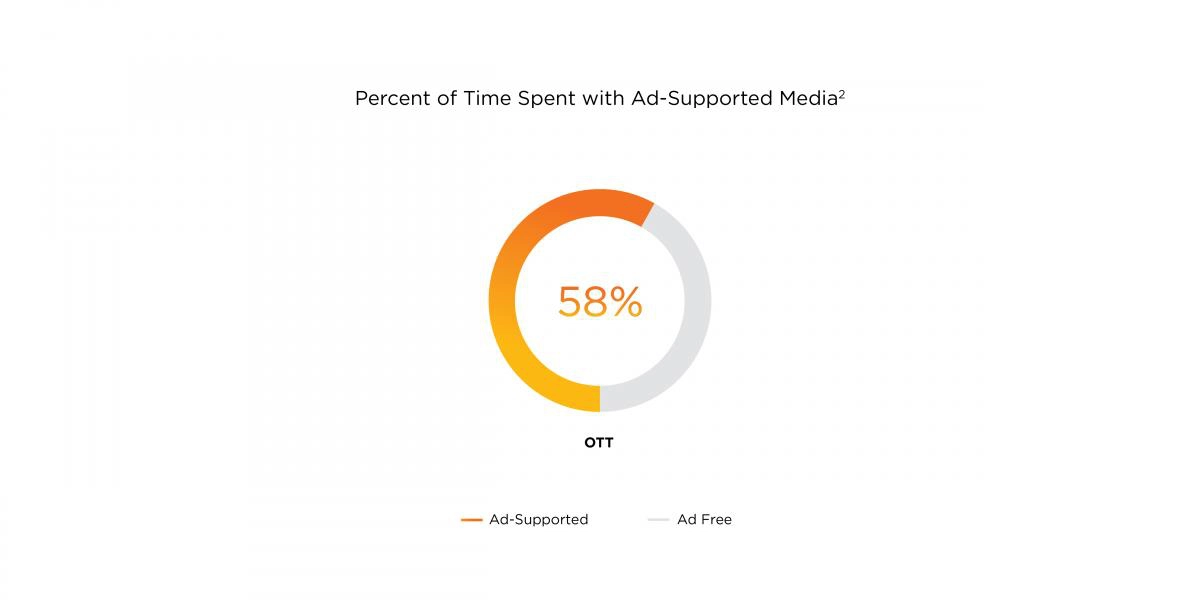TV has a proven effect on election outcomes. But TV has changed. In addition to traditional viewing via cable and satellite, over-the-top (OTT) streaming services are now a popular and growing media type. Together, TV and OTT offer full-funnel outreach capabilities and are important components of a complete political advertising campaign.
About OTT
We define OTT as any video streamed over the internet, regardless of device. This includes content viewed via connected TV (CTV), as well as video content streamed on mobile devices, tablets, computers, and other screens.
OTT content has wide reach, and U.S. households consume a lot of it. More than 70 million U.S. homes are OTT-capable,1 and more than three-fourths of U.S. broadband households subscribe to at least one OTT service.
Additionally, OTT accounts for 19% of all video time for a total of more than an hour daily among U.S. adults.2 Since 58% of that time is spent with ad-supported OTT,2 the medium offers valuable advertising opportunities.
Using TV and OTT for Political Advertising
Advertisers can maximize the impact of their political advertising by combining TV and OTT. By diversifying media outlets, advertisers can achieve incremental reach and deliver their message to more of the right viewers.
Advertisers can root their ad campaigns in TV for a strong foundation. Traditional TV reaches 89% of Americans each week, with viewers tuning in for an average of nearly four hours a day.2 And for political campaigns in particular, advertising on TV strongly correlates to higher win rates.
In addition, candidates can expand their advertising to OTT, which shares many of TV’s strengths. TV and OTT are engaging, video-based mediums that excel in forming emotional connections, an important aspect of a winning political campaign strategy.
Likewise, both have addressable capabilities and can help candidates reach desired audiences at the right times. Rather than simply buying networks and dayparts, these types of advertising are now powered by data insights, making them more precise and accountable.
With both TV and OTT, candidates can target their political ads by:
- Geography: Focus on battleground states and districts.
- Demographics: Choose an audience based on age and gender.
- Audience Segment: Target segments based on traits like interests, lifestyle, and household income.
- Voter attributes: Deliver messaging to aggregated households based on party affiliation, voting propensity, and opinions on hot-button issues.
By combining their naturally broad reach with addressable capabilities, TV and OTT can both act as full-funnel solutions. Use TV and OTT to reach potential voters at every stage of the decision-making process:
- Upper Funnel: Reach broad audiences to raise awareness.
- Middle Funnel: Target specific audience segments in order to sway opinions.
- Lower Funnel: Deliver your message to your most likely supporters to turn out the vote.
With the popularity and addressable capabilities of TV and OTT, political candidates can utilize the power of the mediums to achieve a broad and targeted reach. In a single media buy, candidates can deliver the right messages to the audiences that matter most to them.
Sources:
1. National Center for Education Statistics, “ Number and percentage of households with computer and internet access, by state: 2016,” https://nces.ed.gov/programs/digest/d17/tables/dt17_702.60.asp. Advanced Television, “Data: 76% US homes subscribe to OTT,” 2020, https://advanced-television.com/2020/04/29/data-76-us-homes-ott-subscribers/. 2. Nielsen Total Audience Report, February 2020.




